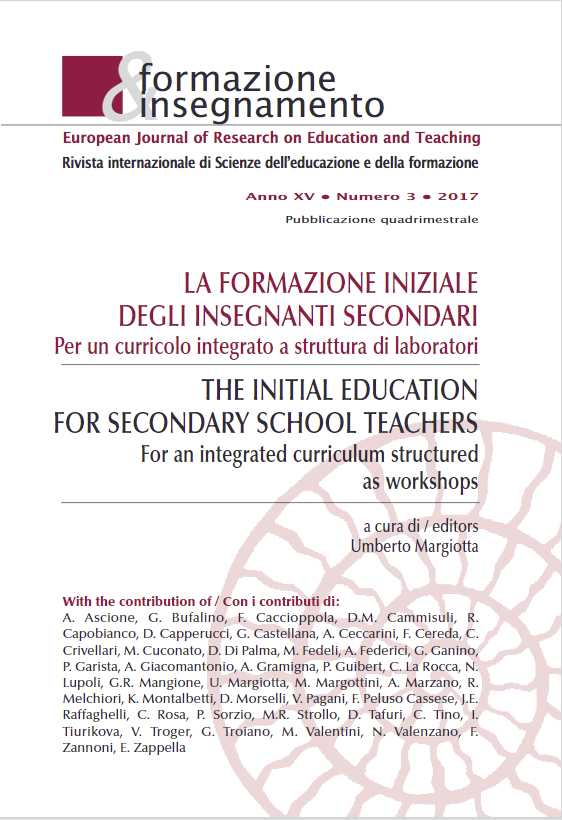Growing up in Nature: spontaneity, practicality and the state of the art of the Agazzi method
Abstract
The article analyzes the principles of the educational method of the Agazzi
sisters, the criticisms of this method and the present uses made of it in a
frame of research and international experimental studies. New educational
realities set in natural contexts follow the path of pedagogy and look to planning
an outdoor education where the focal point is movement. Reflections
will be made on the new educative realities that are at present most similar,
such as micro crèche, agro crèche and agro nurseries. The Agazzi child is ‘a
doing one’ and ‘an independently doing one’. So attention will be given to
sensorial education and to the cognitive area with precisely aimed contents
that will include different types of material: natural, artificial and recycled. A
naturalistic type of pedagogy is developed with, at its centre, the pupil who
is placed in an educational context that is seen and experienced primarily as
a familiar setting of sharing and of growth, before one of learning.
Downloads
Published
How to Cite
Issue
Section
License
Copyright (c) 2017 Manuela Valentini, Giovanna Troiano

This work is licensed under a Creative Commons Attribution 4.0 International License.
Formazione & insegnamento is distributed under Attribution 4.0 International (CC BY 4.0).
For further details, please refer to our Repository & Archiving Policy, as well as our Copyright & Licensing Terms.





